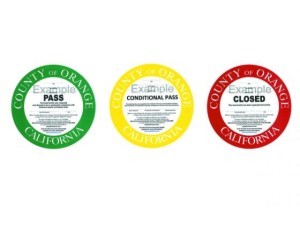Inspections and disclosure do not make safe restaurants.
Restaurants make safe restaurants.
 Inspection and disclosure are minimal tools to hold folks accountable.
Inspection and disclosure are minimal tools to hold folks accountable.
The bare minimum.
So comparing one against the other seems kinda, dumb.
Orange County will remain the only Southern California county not using letter grades for restaurant health inspections after the Board of Supervisors voted against them Tuesday.
But local restaurants will be inspected more often following the board’s approval of fee increases for owners and operators to pay for more inspectors, despite twice rejecting the hikes last year.
Under the new rules, county health officials will inspect restaurants at least three times a year. Currently, inspectors are able to visit local restaurants, on average, 1.6 times a year. Federal guidelines suggest most restaurants should be inspected no fewer than three times a year.
“It’s really important to have these restaurants inspected on a regular basis,” said Supervisor Lisa Bartlett.
Supervisors voted 4-1 against putting letter grades on restaurant windows, a method of alerting potential customers about the outcome of health inspections used in most of the region.
“It’s not a letter grade … that makes the restaurant safe. It’s the quality and frequency of the inspections,” Jim Miller, president of the Dana Point Harbor Merchants Association – which includes 14 restaurants in Dana Point Harbor – told the supervisors.


